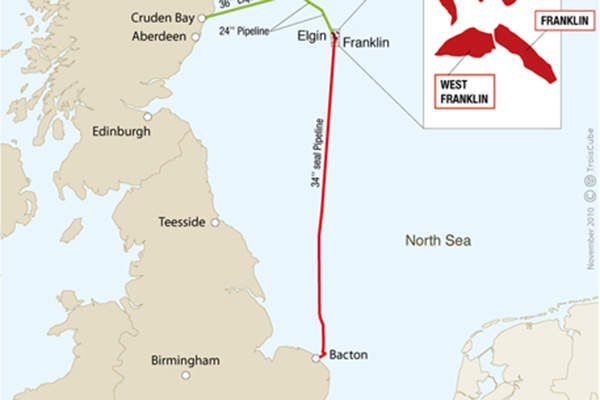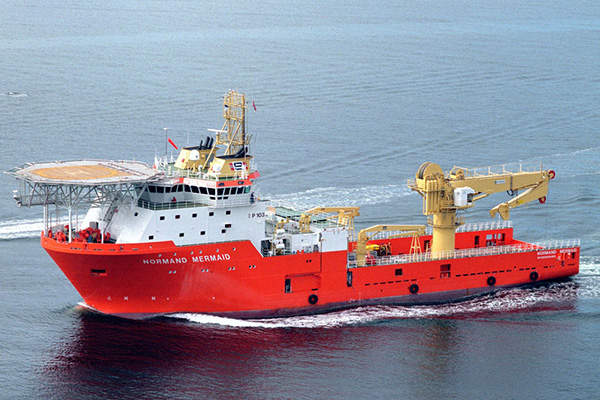The West Franklin field, located in Blocks 29/05b and 29/04d of the UK Continental Shelf (UKCS), was discovered in 2003 and started production in 2007. The field was developed further under the West Franklin Phase 2 development project, as more reserves were identified following the drilling of the West Franklin B appraisal well in 2008.
The project site is located approximately 233km east of Aberdeen at a water depth of around 92m in the Central Graben Area of the North Sea.
The UK Government Department of Energy and Climate Change (DECC) granted approval for the project in November 2010 and development activities started shortly after. Production from the Phase 2 project was achieved in January 2015.
Total operates the condensate gas field while holding a 46.2% interest. Other partners in the field are Eni (21.9%), British Gas (14.1%), E.ON Ruhrgas (5.2%), Exxon (4.3%), Chevron (3.9%), Dyas (2.2%) and Summit Petroleum (2.2%). The project’s development cost is estimated to reach $1bn.
Reserves, production and reservoir type
The project is estimated to add reserves of 85 million barrels of oil equivalent (boe) to the larger Elgin / Franklin area, which accounts for around 7% of oil and gas production in the UK. The production capacity is estimated at 40,000boepd.
West Franklin’s reservoirs are the deepest in the UKCS, lying at a depth of approximately 6,000m below the seabed, and are rapidly depleting reservoirs situated in very high-pressure (HP) and high-temperature (HT) environments.
West Franklin Phase 2 development
The development plan for the project included the drilling of three wells and installation of a new wellhead platform (WHP), which is tied back to the new Elgin WHP B and bridge-linked to the Elgin WHP A, located 6km north, before the gas and liquids are processed at the Elgin process, utilities and quarters (PUQ) platform.
Processed gas is transported by pipeline to Bacton, while the condensate is transported to Kinneil via the Forties Pipeline. The wells were drilled by Rowan Gorilla V jackup rigs using drilling muds and fluids.
The jacket of the new platform weighs around 5,400t, with the 3,000t topside 40m-long and 800m-wide. The topside comprises three main decks, an emergency shutdown valve (ESDV) deck and a helideck.
The topside is designed with 12 slots to accommodate more wells, process facilities, methanol and wash-water storage facilities, a high-integrity protective system (HIPS) and cold vent, an accommodation facility, a local equipment room (LER), a lifeboat and a platform crane.
Subsea works involved the installation of a 6.24km main pipeline bundle, incorporating two insulated pipe-in-pipe production lines to connect the new West Franklin A and Elgin B platforms, two towheads, an adjacent 6.6km-long control umbilical and associated facilities.
Contractors involved with West Franklin
Rosetti Marino was awarded the engineering, procurement, construction and installation (EPCI) contract, including the hook-up and commissioning of topsides for the West Franklin platform. Fabrication works were carried out at Rosetti Marino’s Piomboni Yard, Marina di Ravenna, Italy. The detailed design for the topsides was performed by Tecon. The EPCI contract for the platform jacket was awarded to Saipem.
In December 2011, the subsea umbilicals, risers and flowlines (SURF) contract, worth $190m, was awarded to Subsea 7. Ocean Installer’s Normand Mermaid construction support vessel was contracted in February 2014, to dredge and remove the top three metres of earthwork at the three drilling rig locations.





